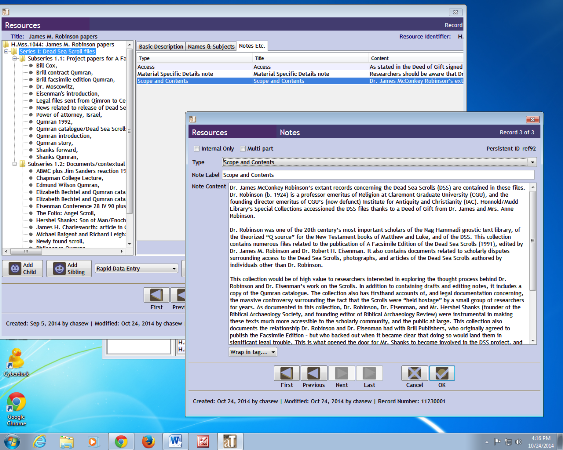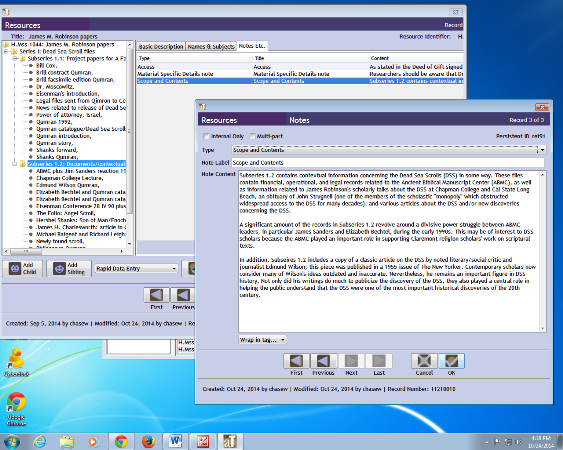Hello everyone! Because I’ve devoted so much time to processing the Nag Hammadi Codices Project, I have – as you might imagine – had ample opportunity to consider the scholarly potential of this collection. Recently, though, I decided that it would be fun/enlightening to take a break from the academic side of things and learn a little more about the popular religious culture that has sprung up around the texts since they were re-discovered in 1945.
Once I started looking for information, I discovered there was a lot to find! One of the most entertaining aspects of what you might call “Nag Hammadi Pop Culture” is the connection some people have argued exists between these gnostic texts and…global alien invasion. The basic gist of these conspiracy theories is that gnostic/Nag Hammadi writings about beings called Archons prove that aliens visited earth. And the alien activity didn’t stop back then, they argue. Even today people are being “invaded by Archons,” and that is why we have so much suffering in the world.
But if you’re finding yourself shaking your head in skepticism, know you’re not alone. Scholars certainly don’t view the Nag Hammadi texts as histories of extraterrestrial activity. Although it is true that the Archons loomed large in the gnostic imagination, it’s not because they had recently landed near the Nile in a spaceship. Rather, they were discussed with frequency because they were important mythological figures in gnostic theology. Different gnostic groups propagated different interpretations of Archon theology, but the general themes were usually the same. Namely, gnostics believed that the Archons were powerful, non-human beings. They had less authority than God/the Ultimate Creator, but they had vastly greater power than human beings. As such, they were often presented in ancient writings as hostile or threatening figures that divided humans from their God.
With this in mind, you can imagine how interesting I find contemporary arguments that the Nag Hammadi library is “factual evidence” that the Archons were alien invaders! While I don’t get on board with this theory, I do think it is a fascinating example of how a group of people very far removed from the culture in which the Nag Hammadi texts were created can come up with a very creative interpretation of them…based on contemporary cultural anxieties and concerns. In scriptural studies, there is a term for this: eisegesis. Specifically, eisegesis means “an interpretation, especially of Scripture, that expresses the interpreter’s own ideas, bias, or the like, rather than the meaning of the text.” The goal for scholars, of course, is to avoid eisegesis and understand how the original record creator’s culture and background shaped his or her perspective and – in turn – the text.
What do you think about this? Had you heard that the Nag Hammadi library was being used by some as “evidence” for supposed extraterrestrial life? Maybe you should come look at our Nag Hammadi collection when we’re done processing it and examine the evidence for yourself!
 (Disclaimer: I recognize this photo is a little fuzzy, but in order to stay on the right side of copyright law, I need to make sure that none of the text in the image is identifiable! Still, it’s clear enough to provide an interesting example.) If you examine this image closely, you can see multiple layers of images that have been cut out and glued, one on top of another. This is what an actual “photoshop” job looked like back then!
(Disclaimer: I recognize this photo is a little fuzzy, but in order to stay on the right side of copyright law, I need to make sure that none of the text in the image is identifiable! Still, it’s clear enough to provide an interesting example.) If you examine this image closely, you can see multiple layers of images that have been cut out and glued, one on top of another. This is what an actual “photoshop” job looked like back then!
